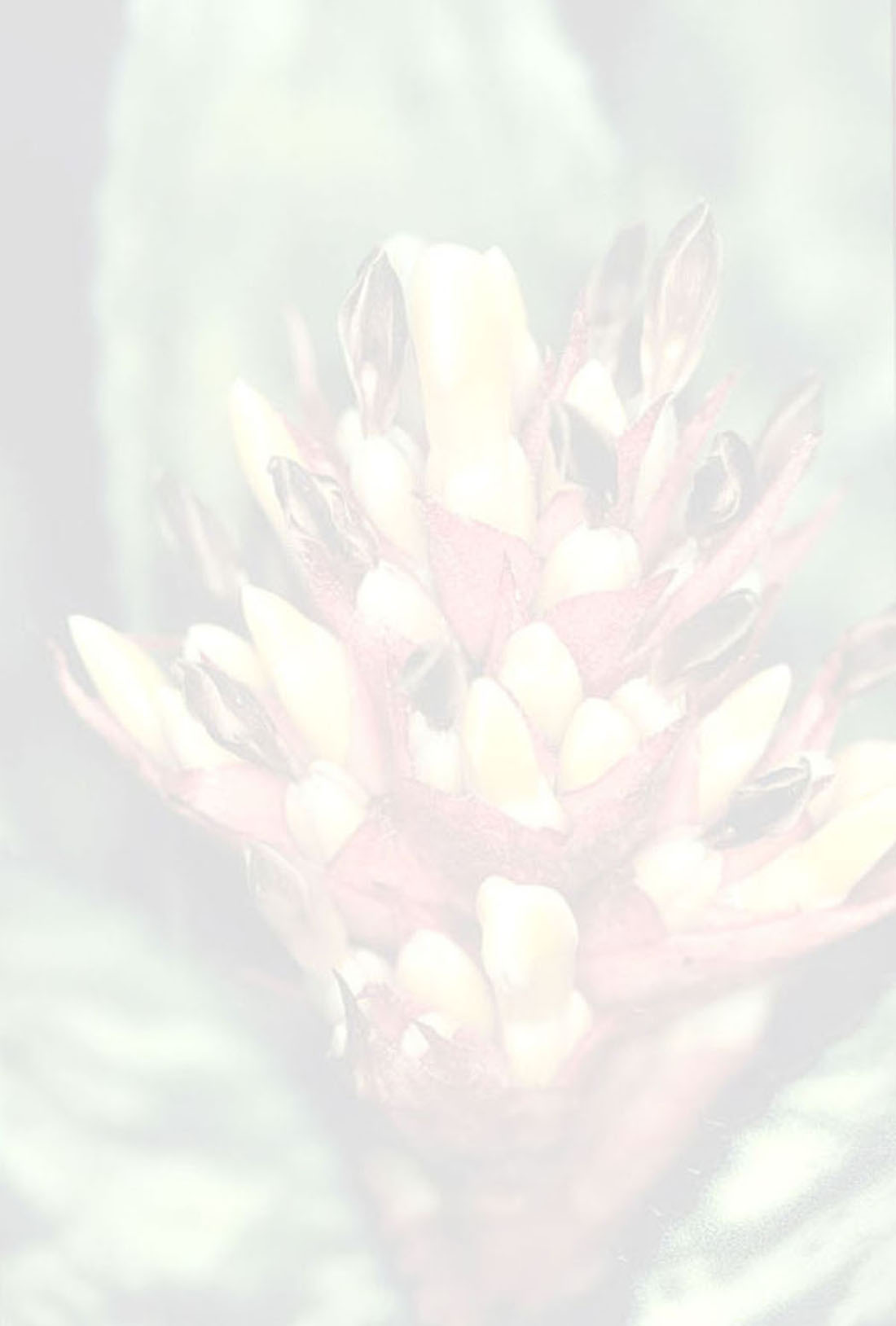


plant terrestrial or epiphytic, flowering 90–130 cm tall, propagating by short basal shoots. leaves 15 to 20, coriaceous, forming a broad crateriform rosette; sheath oblong-ovate to elliptic, 20–28 x 10–16 cm, densely pale lepidote, abaxially dark castaneous toward the base, adaxially dark castaneous to blackish-purple mainly toward the apex; blade linear, not narrowed at base, 40–90 x 7–12 cm, inconspicuously laxly to subdensely white-lepidote mainly abaxially, green to greenish-yellow, apex acute to acuminate, stramineous to blackish, coarsely corrugate, ending in a stout dark rigid spine 1–2 cm long, margins densely spinose, spines straight to slightly antrorse to retrorse, dark brown, 1–2 x 1 mm long, 2–10 mm apart. inflorescence: peduncle erect, 40–70 cm long, 0.7–1 cm in diameter, subdensely to sparsely white-lanate becoming glabrous, finely sulcate, greenish to pale ferruginous; peduncle bracts narrowly sublinear-lanceolate, apex acuminate, 45–9 x 1–1.8 cm, greenish to stramineous, inconspicuously and sparsely white-lepidote, nerved, the basal ones densely spinulose near the apex, the upper ones entire, erect or suberect, exceeding the internodes, exposing most of the peduncle; fertile part narrowly paniculate, once-branched, 30–54 cm long, 12–30 cm in diameter, shorter to exceeding the leaves; primary bracts resembling the upper peduncle bracts but gradually smaller and narrower, distinctly shorter than the branches but exceeding the stipes, spreading, stramineous, entire or sometimes inconspicuously and sparsely spinulose; branches (8-) 14 to 30, laxly arranged, cylindrical, suberect to spreading, ascending toward the apex, with 25 (the shorter ones) to 90 (the longer ones) flowers, 2–2.5 cm in diameter, bearing at the apex a small coma of sterile bracts, the basal ones 7–18 cm long, densely flowered, stipes 0.5–1 cm long, naked, rachis straight, sparsely and inconspicuously white-sublanate to glabrescent, pale yellowish-green, 2.5–4 mm in diameter, alate-sulcate, the terminal branch not distinct from the lateral ones; floral bracts inconspicuous, castaneous-stramineous, 4–6 mm long, with a triangular base 1–1.5 mm wide, ending in a ca 3 mm acicular apex, entire, about equaling the ovary, finely nerved. flowers 13–14 mm long (when petals extended), sessile, densely and polystichously arranged, subverticillate, spreading, with a sweet fragrance; sepals strongly asymmetrical, ca 4 x 3 mm long including the 1–1.5 mm apical suberect acicular mucro, connate at base for ca 1 mm, glabrous, pale greenish-yellow; petals lanceolate, broadly acute to obtuse- emarginate, 8–9 x 2–2.5 mm, erect at base and spreading recurved toward the apex at anthesis, free, naked and without callosities, white. stamens: filament ca 5 mm long, the antepetalous ones adnate to the petals for 2.5–3 mm, the antesepalous ones free; anther 1.5–2 mm long, base sagittate, apex apiculate, fixed near the middle; pollen broadly ellipsoid to ovoid, inconspicuously biporate, exine reticulate, lumina polygonal, muri somewhat thickened. pistil: stigma conduplicate-spiral, cylindrical, lobes inconspicuously crenulate, 16 mm long, greenish-white to pale green; ovary ellipsoid to obovate, terete, ca 4 mm long, ca 2.5 mm in diameter, glabrous, pale green; placentation apical; ovules obtuse; epigynous tube inconspicuous. fruits blue.Edited from (28-03-2017): Siqueira & Leme 2007. Fragments of the Atlantic Forest of Northeast Brazil - Biodiversity, Conservation and the Bromeliads .